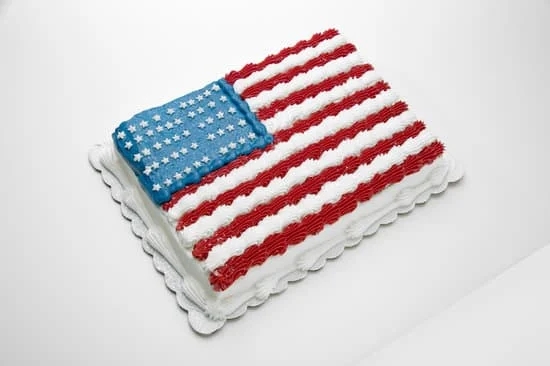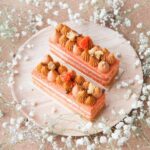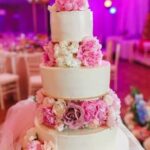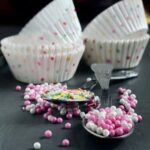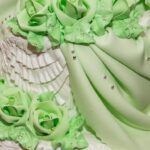Icing plays a crucial role in cake decorating, adding not just flavor but also visual appeal to your creations. Whether you’re a beginner or an experienced baker, having the right icing recipe for decorating a cake can elevate your baked goods to a whole new level. From creating intricate designs to adding that final touch of sweetness, icing is essential in making your cakes stand out.
When it comes to decorating cakes, choosing the right type of icing is key. There are various options available, each with its own unique characteristics and uses. Understanding the different types of icing and their purposes can help you achieve the desired look for your cake. Whether you prefer a smooth buttercream or glossy royal icing, having the knowledge of which icing to use for specific decorations is essential for successful cake decorating.
In addition to knowing the types of icing to use, having the right ingredients is equally important. Essential components like sugar, butter, and flavoring agents contribute not only to the taste but also to the texture and consistency of your icing. By ensuring you have quality ingredients on hand, you can create a delicious and visually appealing icing that will make your cakes irresistible.
Types of Icing for Cake Decoration
When it comes to cake decoration, the type of icing you use can make all the difference in achieving a beautiful and delicious finished product. There are several types of icing that are commonly used for cake decoration, each with its own unique characteristics and flavor profiles. Some popular options include buttercream icing, royal icing, fondant, and cream cheese frosting.
Buttercream Icing
Buttercream icing is a classic choice for cake decorating due to its smooth texture and rich, buttery flavor. It is made from a combination of butter, powdered sugar, and vanilla extract, making it easy to work with and perfect for piping onto cakes. Buttercream can be tinted with food coloring to create vibrant decorations or left white for a more traditional look.
Royal Icing
Royal icing is a versatile icing that hardens when dried, making it ideal for intricate designs and decorations that need to hold their shape. It is made from powdered sugar, egg whites or meringue powder, and water, resulting in a glossy finish that looks elegant on cakes. Royal icing can be used for piping delicate details, creating lace patterns, or even making edible decorations like flowers or snowflakes.
Fondant
Fondant is a smooth and pliable icing that can be rolled out into thin sheets and draped over cakes to create a flawless finish. It has a sweet flavor and offers a clean canvas for intricate designs or sculpted decorations.
Fondant can be shaped into 3D figures, textured with molds or embossing tools, or painted with edible colors for a truly customized cake decoration. While some find fondant challenging to work with due to its consistency, practice makes perfect when it comes to mastering this unique icing technique in cake decorating.
Essential Ingredients for Making Icing
When it comes to making the perfect icing for decorating a cake, having the right ingredients is key. Whether you’re looking to create a simple buttercream or a more intricate royal icing, there are some essential components that you’ll need to have on hand. Here are some of the most common ingredients used in various types of icing recipes:
- Confectioners’ sugar (powdered sugar): This is the base ingredient for most icings and provides sweetness and stability.
- Butter or shortening: These fats help give the icing a creamy texture and rich flavor.
- Vanilla extract or other flavorings: Adds depth of flavor and enhances the overall taste of the icing.
- Milk or heavy cream: Used to thin out the icing to achieve the desired consistency for spreading or piping.
In addition to these main ingredients, some recipes may call for additional items such as egg whites, corn syrup, or cream of tartar depending on the type of icing being made. It’s important to follow the recipe carefully and ensure that all ingredients are at room temperature for best results.
Step-by-Step Instructions for Making the Perfect Icing
Creating a smooth and delicious icing for decorating your cakes doesn’t have to be challenging. With the right ingredients and techniques, you can achieve professional-looking results from your own kitchen. Here’s a simple step-by-step guide to making the perfect icing:
- Sift confectioners’ sugar into a mixing bowl to remove any lumps.
- Cream together butter or shortening with vanilla extract until smooth and fluffy.
- Gradually add powdered sugar into the mixture, beating well after each addition until fully incorporated.
- If needed, adjust consistency by adding small amounts of milk or heavy cream until desired thickness is reached.
By following these steps and experimenting with different flavor variations, you can customize your icing recipe to suit any cake decorating project.
Step-by-Step Instructions for Making the Perfect Icing
Icing is an essential element in cake decorating, as it not only adds flavor but also serves as a canvas for creative designs and decorations. Making the perfect icing can truly elevate the look and taste of your cakes, making them a show-stopper at any event. Whether you’re a novice baker or a seasoned pro, having a foolproof icing recipe for decorating a cake is key to achieving professional-looking results.
To make the perfect icing for decorating your cakes, you will need a few essential ingredients. These ingredients may vary depending on the type of icing you choose to make, but some common elements include confectioners’ sugar (powdered sugar), butter or shortening, milk or water, and flavorings such as vanilla extract. Here is a simple list of basic ingredients needed to make most types of icing:
- Confectioners’ sugar (powdered sugar)
- Butter or shortening
- Milk or water
- Vanilla extract (optional)
Now that you have gathered all your ingredients, it’s time to start making the perfect icing for decorating your cake. Follow these step-by-step instructions to ensure that your icing turns out smooth, creamy, and easy to work with.
- In a mixing bowl, cream together softened butter or shortening until smooth.
- Sift confectioners’ sugar into the bowl gradually, mixing well after each addition.
- Add milk or water slowly until desired consistency is reached. Be careful not to add too much liquid at once.
- If desired, add flavorings like vanilla extract to enhance the taste of your icing.
By following these steps carefully and using quality ingredients, you’ll be on your way to creating the perfect icing recipe for decorating a cake that looks as good as it tastes. Practice makes perfect when it comes to working with icing, so don’t be afraid to experiment with different techniques and designs to unleash your creativity and impress your guests with stunning cake decorations.
Tips for Achieving the Right Consistency for Decorating
When it comes to decorating a cake with icing, achieving the right consistency is key to creating a beautiful and professional-looking finish. Whether you are using buttercream, royal icing, or fondant, the consistency of your icing can make all the difference in how well it adheres to the cake and how smoothly you can apply it. The ideal consistency will vary depending on the type of icing you are using and the specific design you are trying to create.
One important tip for achieving the right consistency for decorating is to start with a thicker icing and gradually add small amounts of liquid until you reach your desired thickness. For buttercream icing, this may mean adding milk or cream a teaspoon at a time until the icing is smooth and spreadable.
For royal icing, which dries hard and glossy, you may need to adjust the consistency by adding more powdered sugar or water. Being patient and making small adjustments can help you avoid ending up with icing that is too runny or too thick for decorating.
Another helpful tip is to test the consistency of your icing before using it on your cake. You can do this by spreading a small amount of icing on a plate or parchment paper to see how it holds its shape. If the icing is too stiff, it may be difficult to pipe intricate designs or achieve smooth finishes.
On the other hand, if the icing is too thin, it may not hold its shape when piped onto the cake. Making adjustments as needed will ensure that your icing is just right for decorating your cake beautifully.
Lastly, keeping in mind that different decorations require different consistencies of icing is crucial for successful cake decorating. For example, if you are piping intricate details like flowers or borders, you will want a slightly thicker consistency that holds its shape well.
On the other hand, if you are spreading icing over the entire cake surface for a smooth finish, a slightly thinner consistency may be more appropriate. Adapting your icing’s thickness based on your specific decoration needs will help you achieve professional results every time.
| Key Tip | Importance |
|---|---|
| Start with thicker icing | Gradually add liquid until desired thickness |
| Test before use | Spread on plate to check stiffness |
| Different decorations = different consistencies | Customizing based on decoration needs |
Techniques for Decorating a Cake With Icing
Decorating a cake with icing can be a fun and creative process that allows you to showcase your personality and style. There are various techniques that can be used to achieve stunning results when it comes to decorating cakes with icing. From simple designs to intricate patterns, the possibilities are endless. Here are some popular techniques that you can use to elevate your cake decorating game.
Piping
One of the most common techniques for decorating a cake with icing is piping. Piping involves using a piping bag and various tips to create different shapes, borders, and designs on the surface of the cake. Whether you’re creating rosettes, shells, or writing messages on the cake, piping allows for precision and control in your decoration.
Spatula Painting
Spatula painting is a technique that involves using an offset spatula to create unique textures and patterns on the surface of the cake. By spreading different colored icings in a swirling motion, you can achieve a marbled effect or create abstract designs that add visual interest to your cake.
Stenciling
Stenciling is another technique that can be used to decorate a cake with icing. By placing a stencil over the surface of the cake and gently spreading icing over it, you can create intricate patterns and designs with ease. Stencils come in various shapes and styles, allowing you to customize your cake decoration according to your theme or preferences.
Whether you’re a beginner or an experienced baker, experimenting with different decorating techniques can help you take your cakes to the next level. Don’t be afraid to get creative and try out new ideas – after all, half the fun of baking is in the decorating.
Creative Ideas for Icing Decorations
When it comes to decorating a cake with icing, the possibilities are endless. Whether you’re a beginner or an experienced baker, coming up with creative ideas for icing decorations can take your cake to the next level. One popular technique is piping intricate designs using different tips and techniques. For example, you can create beautiful rosettes, swirls, dots, or even write a personalized message on the cake using a piping bag.
Another creative idea for icing decorations is using food coloring to create vibrant and eye-catching designs. You can mix different colors to make ombre effects, marble patterns, or even paint artistic scenes on the cake. Food-safe stencils can also be used to create intricate designs with icing sugar or buttercream. Additionally, edible flowers, sprinkles, chocolate shavings, or fresh fruit can be used as decorative elements to enhance the overall look of the cake.
For those looking for a more advanced challenge, try experimenting with three-dimensional decorations made from icing. You can sculpt flowers, figurines, animals, or even buildings using fondant or gum paste. These intricate creations will surely impress your guests and add a touch of elegance to any special occasion cake.
| Creative Idea | Description |
|---|---|
| Piping Techniques | Create rosettes swirls and personalized messages on cakes using different piping tips. |
| Food Coloring Designs | Use vibrant colors and create ombre effects marbling painting or use stencils to achieve various patterns. |
| Three-Dimensional Decorations | Sculpt flowers animals figurines or other objects using fondant or gum paste for a stunning effect. |
Troubleshooting Common Issues With Icing for Cake Decorating
When it comes to cake decorating, one of the biggest challenges that bakers often face is dealing with common issues that can arise when working with icing. Whether you are a beginner or a seasoned baker, it is important to know how to troubleshoot these issues to ensure that your cakes turn out beautifully decorated.
One common issue that many bakers encounter is icing that is too thin or runny. This can make it difficult to achieve the desired decorations on your cake, as the icing may not hold its shape and could slide off the sides.
To fix this issue, you can try adding more powdered sugar or cornstarch to thicken the icing. Alternatively, you can refrigerate the icing for a short period of time to help it firm up before using it for decorating.
On the other hand, if your icing is too thick and difficult to spread or pipe, you can try adding a small amount of liquid such as milk or water to thin it out. It is important to add liquid gradually and mix well until you reach the desired consistency. Another option is to use a piping bag with a larger tip size to make it easier to pipe the thicker icing onto your cake.
Another common issue with icing for cake decorating is air bubbles forming in the icing while piping. These air bubbles can affect the overall appearance of your decorations and create an uneven texture on your cake. To prevent air bubbles from forming, make sure to gently tap or shake your piping bag before piping out the icing. Additionally, slowly squeezing the piping bag as you work will help minimize air pockets and create smoother decorations on your cake.
Conclusion
In conclusion, mastering the art of icing is essential for perfecting cake decorating. Whether you are a beginner or an experienced baker, having the right icing recipe can make all the difference in bringing your cakes to life. The different types of icings available provide a wide range of options for creating stunning decorations, from classic buttercream to elegant royal icing.
By understanding the essential ingredients needed for making icing and following step-by-step instructions, you can achieve the perfect consistency for decorating your cakes. Remember to experiment with different techniques like piping, flooding, and using fondant to add depth and dimension to your designs. Don’t be afraid to get creative with your icing decorations – whether it’s simple rosettes and borders or intricate floral designs, let your imagination run wild.
As you continue to practice and refine your skills in cake decorating with icing, keep in mind some common issues that may arise and how to troubleshoot them effectively. With patience and perseverance, you’ll be able to overcome any challenges and create beautiful masterpieces that will impress your friends and family. So go ahead, grab your piping bags and spatulas, and start perfecting your icing recipe for decorating a cake today.
Frequently Asked Questions
What Is the Best Icing to Use for Cake Decorating?
The best icing to use for cake decorating ultimately depends on your personal preference and the desired outcome. Buttercream icing is a popular choice due to its versatility and ease of use, while fondant offers a smooth finish for more intricate designs. Royal icing is great for piping details, and cream cheese frosting adds a rich flavor profile to cakes.
How to Make the Perfect Icing for a Cake?
Making the perfect icing for a cake involves finding the right balance between flavor, texture, and consistency. For buttercream icing, beating butter until light and fluffy before gradually adding powdered sugar and flavorings is key.
To make a smooth fondant icing, kneading it properly until pliable but not sticky is crucial. Adjusting the thickness of royal icing with water or confectioners’ sugar can help achieve the desired piping consistency.
What Are the 5 Most Commonly Used Icings for Cakes?
The five most commonly used icings for cakes include buttercream, fondant, royal icing, cream cheese frosting, and ganache. Buttercream is known for its creamy texture and versatility in flavors, while fondant provides a smooth finish ideal for intricate decorations. Royal icing is often used for piping details like flowers or lettering.
Cream cheese frosting adds tanginess to cakes, particularly carrot or red velvet cakes. Ganache is made from chocolate and cream, offering a rich and glossy finish to cakes when cooled properly.

Welcome to our cake decorating blog! My name is Destiny Flores, and I am the proud owner of a cake decorating business named Cake Karma. Our mission is to provide delicious, beautiful cakes for all occasions. We specialize in creating custom cakes that are tailored specifically to each customer’s individual needs and tastes.

